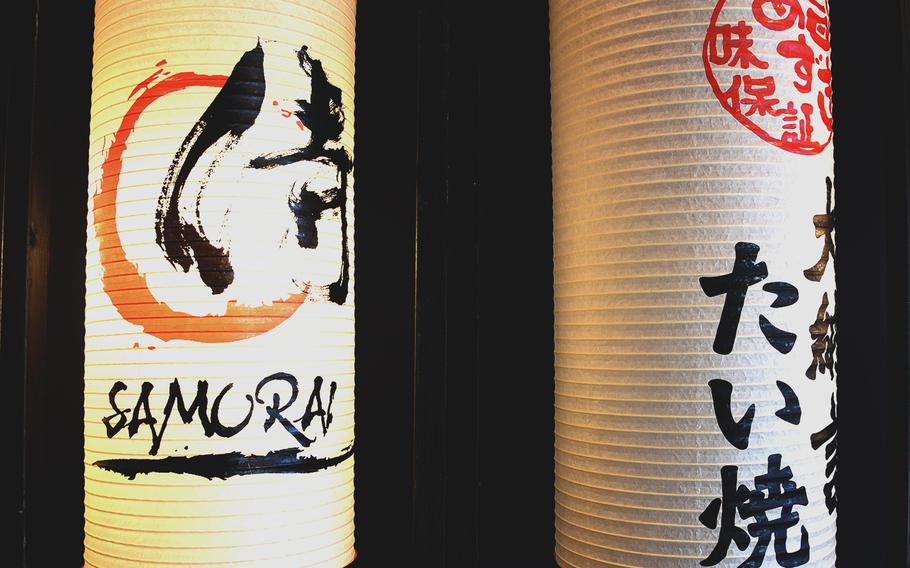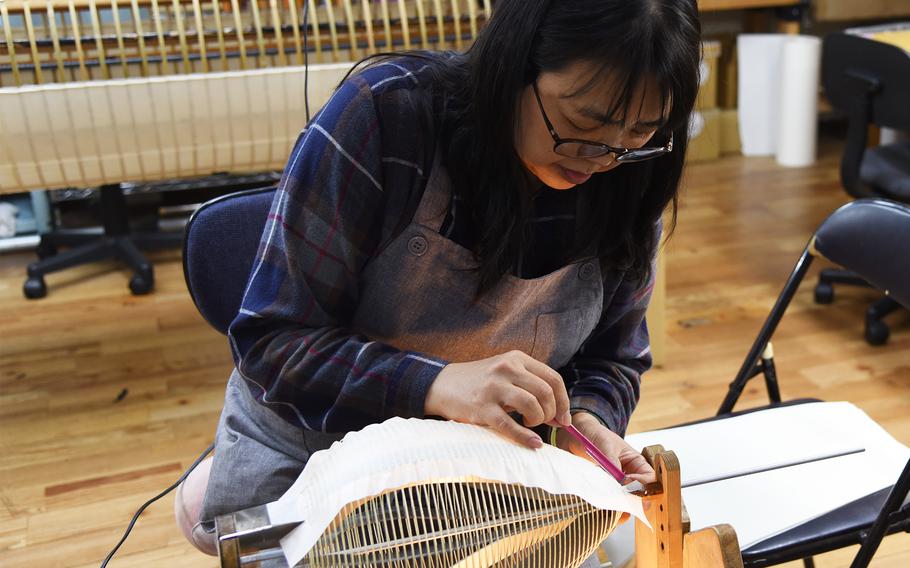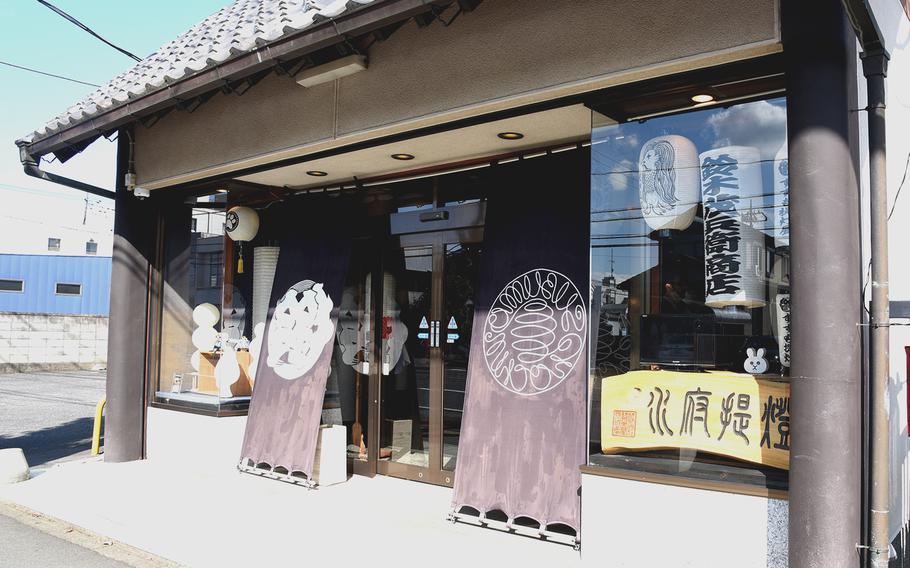
Suzuki Mohei Shoten sells a variety of Japanese lanterns, including those seen here Nov. 9, 2023, in Mito, Ibaraki prefecture, Japan. (Kelly Agee/Stars and Stripes)
Japanese paper lanterns, or chochin lanterns, have many purposes in Japan, including festival ornamentation, displays outside of restaurants and bars or interior lighting.
Suzuki Mohei Shoten in Mito city, Ibaraki prefecture, about two hours north of Tokyo, has been making and distributing lanterns in Japan for more than 150 years. The shop, founded in 1865, continues to make lanterns suitable for a variety of occasions.
The shop windows display all types of these traditional Japanese lanterns, and the shop itself is filled with them from floor to ceiling.
Suzuki Mohei Shoten has lanterns for myriad occasions, including Obon chocin, lanterns that are lit for the prayers of condolence towards the deceased; Bon chocin, which mark the return of the spirits of ancestors and the deceased; and cylindrical chochin for portable shrines and wedding ceremonies.
More conventional chochin include those used for advertising and a new chochin the shop invented called MIC.

Shiho Abe makes a lantern at the Suzuki Mohei Shoten in Mito, Ibaraki prefecture, Japan, on Nov. 9, 2023. (Kelly Agee/Stars and Stripes)
The MIC chochin is nature inspired, and comes in the shapes of birds, stars, mushrooms and moons. A light inside turns on and off with a clap.
The shop also sells lanterns online and will customize a lantern from a design submitted by a customer. Engraved names are a popular request.
Another shop specialty is the Suifu chochin, a 400-year-old design that originated in the Edo period from 1603 to 1868.
Lower-ranking samurai started making these lamps in their spare time to support the economy, Kota Suzuki, of Suzuki Mohei Shoten, told Stars and Stripes Nov. 9 at the shop. The Suifu is made with circles of bamboo strips tied together with string to produce a frame.
Suzuki Mohei Shoten also schedules lantern-making workshops at 10 a.m. and 2 p.m. every Friday from October to April. Admission is 3,300 yen, or about $22. Reservations are required; forms are available on the shop website.
The workshop takes around 90 minutes, which includes 30 minutes for the lanterns to dry. Children under 10 must be accompanied by an adult.
“We want to pass on the tradition of chochining,” Suzuki said.

Suzuki Mohei Shoten in Mito, Ibaraki prefecture, Japan, seen here Nov. 9, 2023, was founded more than 150 years ago. (Kelly Agee/Stars and Stripes)
ON THE QT
Directions: 1-chōme-7-5 Hakamatsuka, Mito, Ibaraki 310-0055; about 2 ½ hour drive from Yokota Air Base; no nearby train station. By bus from the Mito Station on the JR Joban Line, take the bus for Ibaradaimae via Sakaemachi.
Times: Open 9 a.m. to 6 p.m. Monday to Friday; closed Wednesdays from June to Aug. 12
Prices: Lanterns range from 4,500 yen or $31.54 to 16,000 yen or $112.16
Dress: Casual
Information: www.suzumo.com